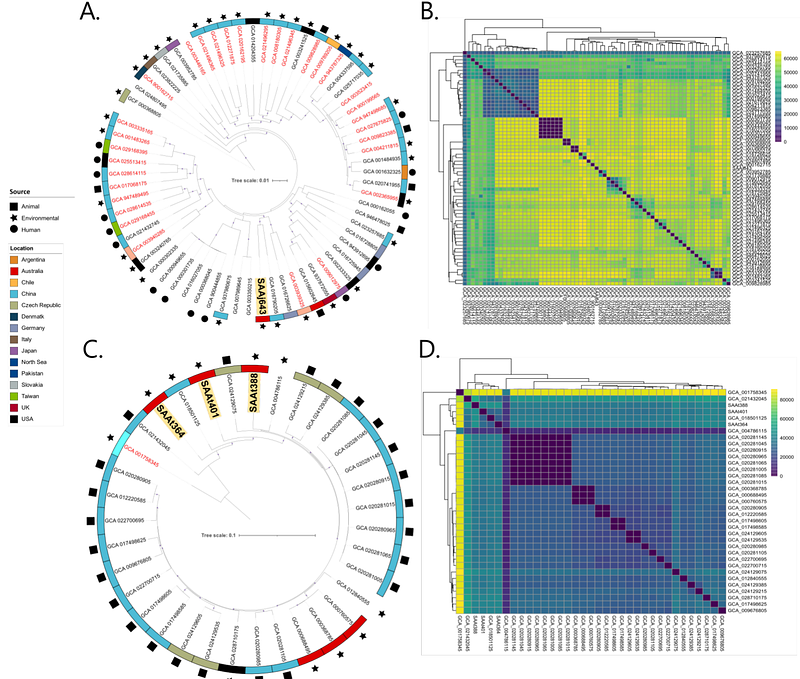Genomic Analysis of Diverse Environmental Acinetobacter Isolates Identifies Plasmids, Antibiotic Resistance Genes, and Capsular Polysaccharides Shared with Clinical Strains

Genomic Analysis of Diverse Environmental Acinetobacter Isolates Identifies Plasmids, Antibiotic Resistance Genes, and Capsular Polysaccharides Shared with Clinical Strains
Tobin, L. A.; Jarocki, V. M.; Kenyon, J. J.; Drigo, B.; Donner, E.; Djordjevic, S. P.; Hamidian, M.
AbstractAcinetobacter baumannii, an important pathogen known for its widespread antibiotic resistance, has been the focus of extensive research within its genus, primarily involving clinical isolates. Consequently, data on environmental A. baumannii and other Acinetobacter species remain limited. Here, we utilised Illumina and Nanopore sequencing to analyse the genomes of ten Acinetobacter isolates representing six different species sourced from aquatic environments in South Australia. All ten isolates were phylogenetically distinct compared to clinical and other non-clinical Acinetobacter strains, often tens of thousands of SNPs from their nearest neighbours. Despite the genetic divergence, we identified pdif modules (sections of mobilised DNA) carrying clinically important antimicrobial resistance genes in species other than A. baumannii, including carbapenemase oxa58, tetracycline resistance gene tet(39) and macrolide resistance genes msr(E)-mph(E). All of these pdif modules were located on plasmids with high sequence homology to those circulating in globally distributed A. baumannii ST1 and ST2 clones. The environmental A. baumannii isolate characterised here (SAAb472; ST350) did not possess any native plasmids; however, it could capture two clinically important plasmids (pRAY and pACICU2) with high transfer frequencies. Furthermore, A. baumannii SAAb472 possessed virulence genes and a capsular polysaccharide type analogous to clinical strains. Our findings highlight the potential for environmental Acinetobacter species to acquire and disseminate clinically important antimicrobial resistance genes, underscoring the need for further research into the ecology and evolution of this important genus.